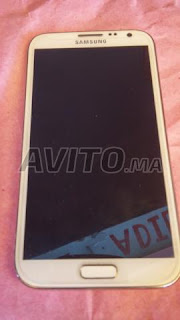samedi 22 octobre 2016
The Sony HVR-Z1 is a professional, broadcast quality, HDV camcorder. It is popular for producers of documentaries and other television programs because of its small size and relatively low cost. It records in 1080i. It uses the DV recording format however it can record in DV, DVCAM and HDV versions of the format. It can also record in PAL (25 frames) and NTSC (30 frames).
The LG G Pad 8.3 (also known as LG G Tab 8.3) is an 8.3-inch (21 cm) Android-based tablet computer produced and marketed by LG Electronics.[2] It belongs to the LG G series, and was announced on 4 September 2013 and launched in November 2013. Unlike its predecessor which had an 8.9-inch (23 cm) screen, the G Pad 8.3 has a smaller 8.3-inch (21 cm) screen.
A tablet computer, commonly shortened to tablet, is a thin, flat mobile computer with a touchscreen display, which in 2016 is usually color, processing circuitry, and a rechargeable battery in a single device. Tablets often come equipped with sensors, including digital cameras, a microphone, and an accelerometer. The touchscreen display uses the recognition of finger or stylus gestures to replace the mouse, trackpad and keyboard used in laptops. They usually feature on-screen, pop-up virtual keyboards for typing and inputting commands. Tablets may have physical buttons for basic features such as speaker volume and power, and ports for plugging in network communications, headphones and battery charging. Tablets are typically larger than smartphones or personal digital assistants with screens 7 inches (18 cm) or larger, measured diagonally.[1][2][3][4] Tablets have Wi-Fi capability built in so that users can connect to the Internet and can have cellular network capabilities.
The Samsung Galaxy Tab is a line of upper mid-range Android-based tablet computers produced by Samsung Electronics. It is similar to the Samsung Galaxy Note series except without the Samsung S-Pen stylus.[1] The first model in the series, the 7-inch Samsung Galaxy Tab, was first introduced on 2 September 2010 at the IFA in Berlin.[2] Since then there have been several models released, including models with 7.7, 8.9 and 10.1-inch displays. The Wi-Fi versions of the tablet all include a GPS system whilst the 3G/4G tablets include cellular capability as well.
The iPhone 6S and iPhone 6S Plus (stylized as iPhone 6s and iPhone 6s Plus) are smartphones designed by Apple Inc. The devices were announced on September 9, 2015, at the Bill Graham Civic Auditorium in San Francisco by Apple Inc. CEO Tim Cook. The iPhone 6S and iPhone 6S Plus jointly serve as successors to the iPhone 6 and iPhone 6 Plus of 2014 and were the flagship devices of the iPhone series until September 7, 2016 when they were replaced by the iPhone 7 and iPhone 7 Plus.[15] The iPhone 6S has a similar design to the 6 but updated hardware, including a strengthened chassis and upgraded system-on-chip, a 12-megapixel camera, improved fingerprint reader, and LTE Advanced support. The iPhone 6S also introduces a new hardware feature known as "3D Touch", which enables pressure-sensitive touch inputs. The iPhone 6S and 6S Plus set a new first-weekend sales record, selling 13 million models, up from 10 million for the iPhone 6 and 6 Plus in the previous year.[16]
The Samsung Galaxy Note II is an Android phablet smartphone. Unveiled on August 29, 2012 and released in October 2012, the Galaxy Note II is a successor to the original Galaxy Note, incorporating improved stylus functionality, a larger 5.5-inch (140 mm) screen, and an updated hardware design based on that of the Galaxy S III. The Note II was released to positive critical reception for its improvements over the original Galaxy Note, and sold over 5 million units within only its first two months of availability. Samsung announced a successor to the Galaxy Note II, the Galaxy Note 3, on September 4, 2013.[10]
The HTC One (codenamed and retroactively called M7) is a touchscreen-based Android smartphone designed, developed, and manufactured by HTC. The smartphone was unveiled on 19 February 2013 at press events in New York City and London and is HTC’s seventh flagship smartphone.[2] It is the successor to the company’s 2012 flagship model, the One X—which was critically acclaimed, but commercially unsuccessful due in part to insufficient marketing efforts. To make the device stand out among its competition, the HTC One was developed with a major emphasis on unique hardware and software features; which included a unibody aluminum frame, a 1080p full-HD display, dual front-facing stereo speakers, a camera with a custom image sensor and the ability to automatically generate montages of media, an updated version of HTC’s Sense user experience, BlinkFeed—an aggregator of news and social network content, and an electronic program guide app with the ability to serve as a universal remote via an IR blaster located in the device’s power button.
Inscription à :
Articles (Atom)






